Traditional Zapotec rugs
Travel is more than the seeing of sights; it is a change that goes on, deep and permanent, in the ideas of living. Miriam Beard
A short drive from Oaxaca City is the tiny town of Teotitlán del Valle, famous for the production of the traditional woven Zapotec rugs. It is their primary economic activity other than agriculture.
Weaving in this town dates back at least until 500 BCE. The earliest weavings used cotton and the backstrap loom. Teotitlán would pay its financial tribute to the Aztecs in weavings. More modern weaving was introduced by Dominican bishop Juan López Dezárate around 1535 when the bishop brought sheep and treadle loom to the area. The new looms and materials allowed for the weaving of large, heavy duty items such as rugs, serapes and blankets.
The rugs are handcrafted from wool and most of the designs are woven from the craftsmen’s memory. Designs include Zapotec and Mixte glyphs and fretwork and more contemporary designs including reproductions of works by famous artists such as Picasso, Joan Miró, Matisse, or Diego Rivera.

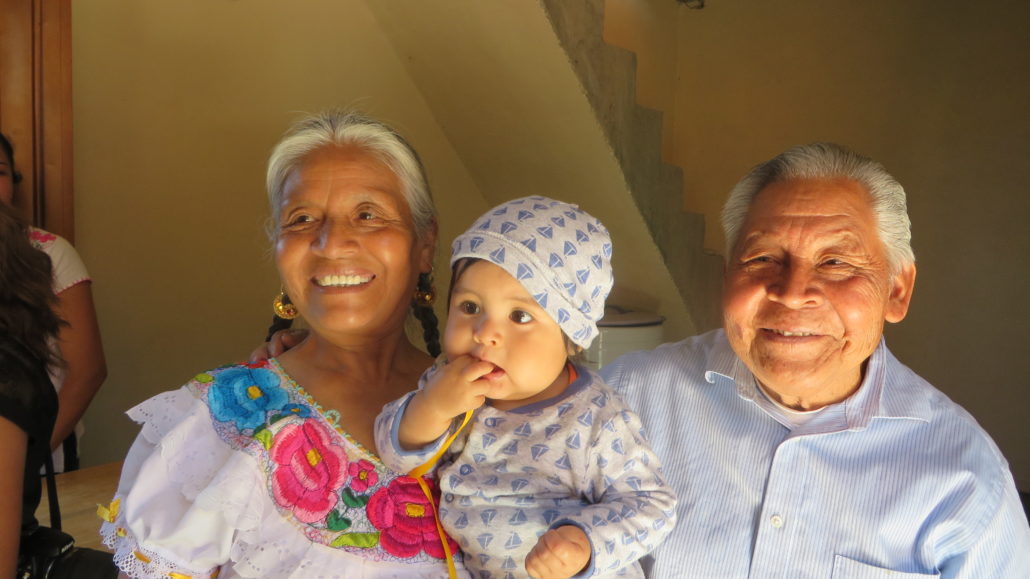
| It is a family owned and operated business |
The making of the rugs begins with the washing of the raw wool to rid it of dirt and residues. Next it is carded then spun into yarn. The yarn is wound into large balls to prepare for dying with natural dyes such as indigo, cochineal (insect), marigold and others. The traditional looms are hand-operated.

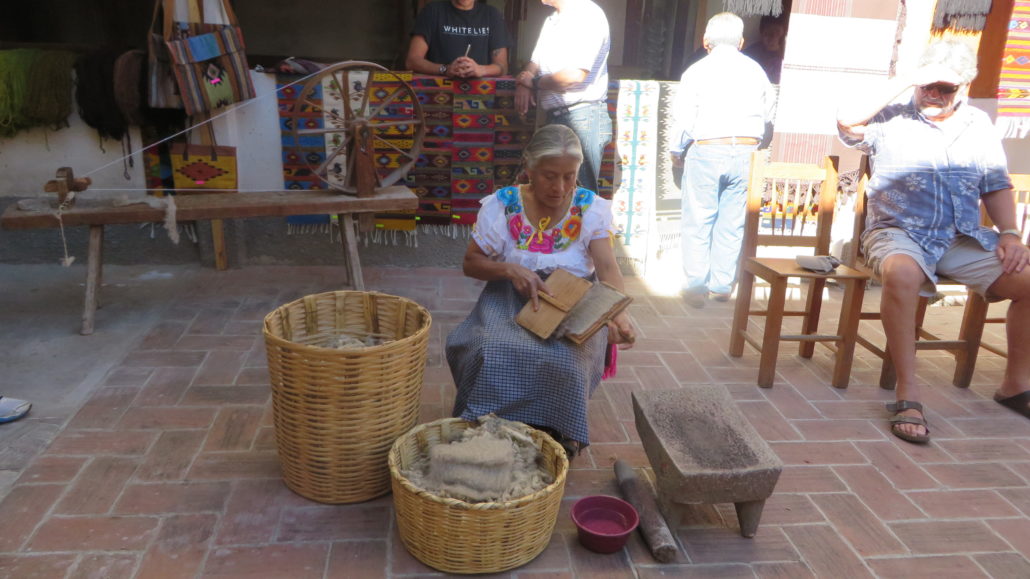
| carding the wool |
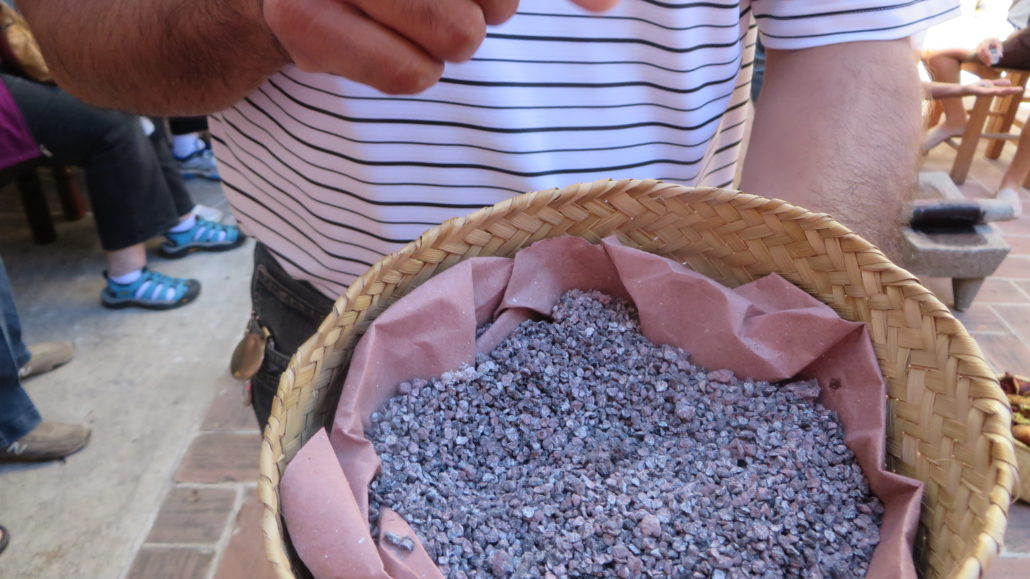

| These are the dried cochineal. they feel like tiny stones |

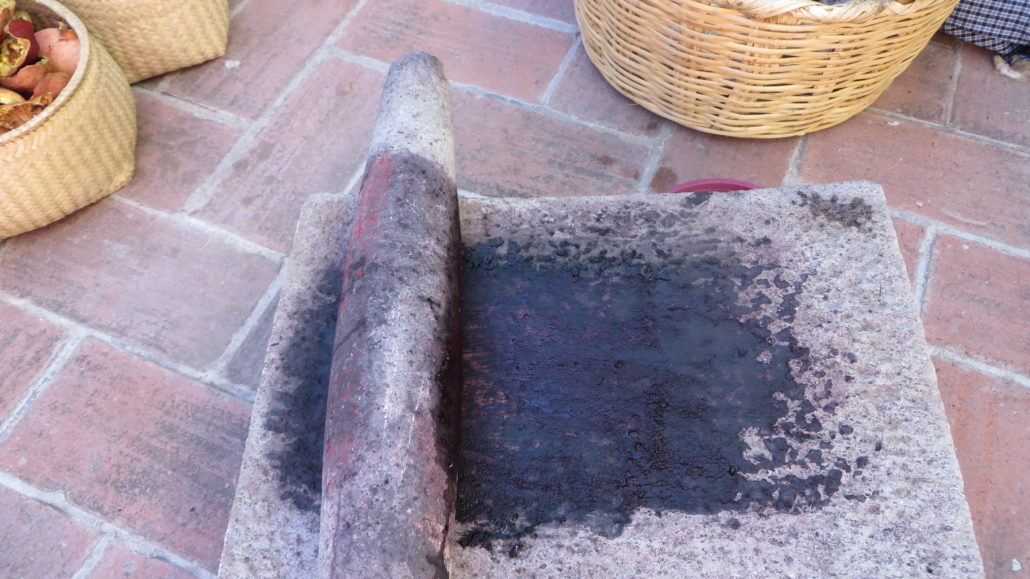
| She is grinding the dried cochineal beetles |


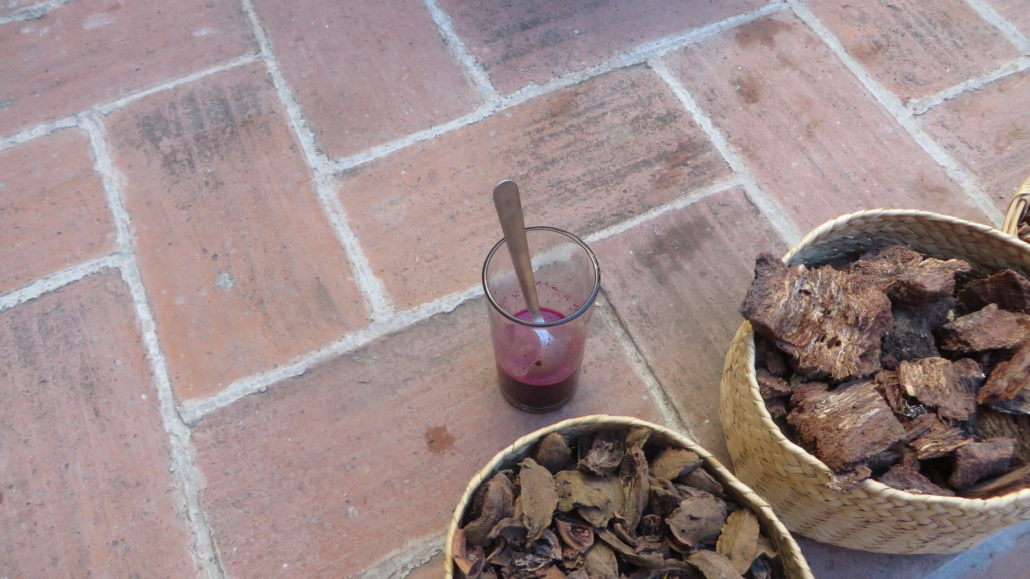 |
| walnut shells and Brazilwood |



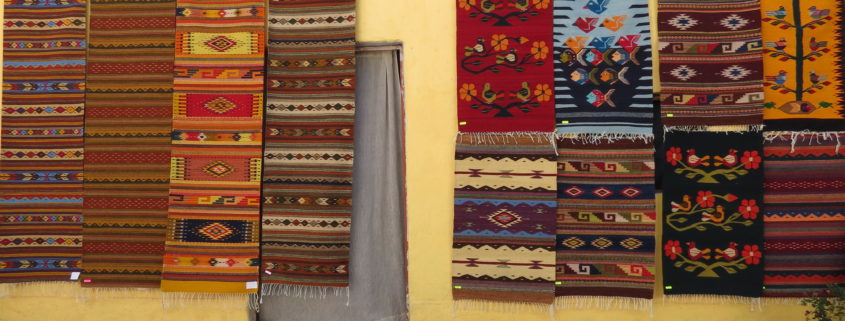
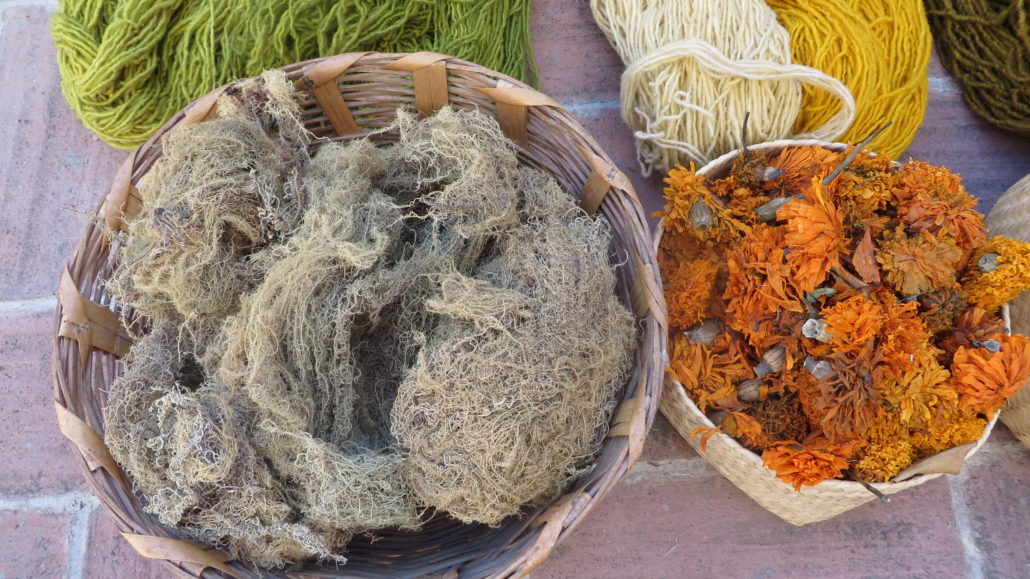


Leave a Reply
Want to join the discussion?Feel free to contribute!